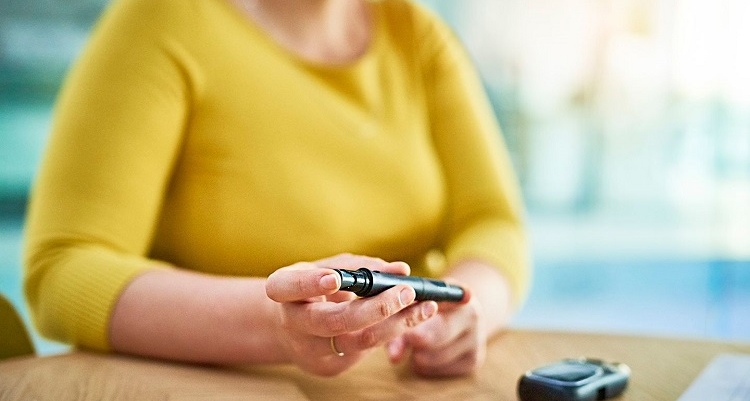There is often confusion when it comes to Home Care Packages and whether massage (or massage tools/equipment) can be paid for with a package. It is a complex area with a number of factors that must be carefully considered before deciding.
Departmental considerations
- The intent of the Home Care Package Program is to provide coordinated care and services that help older Australians live safely and independently in their own home for as long as it is safe and appropriate to do so.
- It is important to note that care and services should be the primary expense of any Home Care Package.
- A Home Care Package is not extra income that can be used for everyday items and costs.
- As a Home Care Package Provider, we must adhere to Quality of Care Principles and decision-making frameworks that help us assess whether an item or service can be included in a care plan.
First, let’s look at different types of massage
While there are many types of massage (hot stone massage anyone?) there are two main types of massage we’ll focus on here.
- Remedial Massage (also referred to as therapeutic or clinical massage) – is a specific form of massage therapy that focuses on the treatment of musculoskeletal conditions and injuries. It is a therapeutic approach that aims to address underlying issues and provide targeted treatment to improve function and alleviate pain. Remedial massage therapists have specialised training and knowledge in anatomy, physiology and pathology, allowing them to assess and treat specific soft tissue problems. They use a variety of techniques such as deep tissue massage, myofascial release, trigger point therapy, and stretching to address areas of tension, muscle imbalances, and structural issues. This is an ALLOWABLE expense – see next section.
- Relaxation Massage (often referred to as swedish massage) – is a massage that is focused more on promoting relaxation, reducing stress, and improving overall well-being. While a general massage can provide some therapeutic benefits, its primary aim is to provide a soothing and relaxing experience. Remedial massage CAN NOT be paid from a Home Care Package.
When can remedial massage be included?
Like many services there is not a cut-and-dry answer, this is because the care and services required vary from person to person.
Remedial massage is classified as an allied health service and therefore can be included in a Home Care Package if there is an assessed care need for the service.
A care recipient can access remedial massage under the program when the service is:
- Required due to age-related functional decline and/or person cannot access disability supports.
- In line with best practice guidance for treatment.
- Delivered by an accredited provider.
- Not concurrently being funded by another government program.
Who is qualified to give a massage?
Under a Home Care Package remedial massage is typically performed by one of the following qualified and registered professionals. The specific qualifications and professional requirements may vary depending on the state or territory.
Generally, the following are qualified to provide remedial massage:
- Remedial Massage Therapist: Qualified remedial massage therapists who have completed a Diploma of Remedial Massage or similar recognised qualifications. They should be registered with a professional association, such as the Australian Association of Massage Therapists (AAMT) or Massage and Myotherapy Australia (M&MA).
- Physiotherapist: Registered physiotherapists – AHPRA.
- Myotherapist: Qualified Myotherapists who have completed an Advanced Diploma of Myotherapy or a similar recognised qualification. They should be registered with a professional association, such as the Institute of Registered Myotherapists of Australia (IRMA).
What qualifications are required for a remedial massage therapist?
The two most common qualifications recognised in Australia are:
- Diploma of Remedial Massage: This is nationally recognised. It typically takes 1-2 years of study and covers anatomy, physiology, massage techniques and clinical assessment and treatment.
- Certificate IV in Massage Therapy: This is a lower-level qualification that allows you to work as a general massage therapist in Australia.
Do you need a referral from an allied health professional to receive a remedial massage?
Generally, you do not need a referral from an allied health professional to receive remedial massage. Although in some cases (eg. complex conditions, multiple conditions) massage may be a contraindication. A referral helps to determine whether remedial massage is appropriate for that person and that the treatment aligns with the client’s health goals.
Frequency of remedial massage
The frequency of remedial massage for an older person depends on a variety of factors. It is best to consult a qualified professional. Generally, remedial massage sessions vary from 1 x per week to 1 x per month – having said that it may be more at the beginning of treatment.
Here are a few considerations related to the frequency of remedial massage for an older person:
- Health Condition: if the person suffers from chronic musculoskeletal conditions or injuries, they may benefit from regular sessions to manage the pain, reduce muscle tension and improve mobility.
- Maintenance and Prevention: May be used to maintain overall well-being, prevent muscle imbalances or stiffness and promote relaxation.
- Individual Goals: The frequency of remedial massage may be influenced by the individual’s specific goals. For example – if they are rehabilitating after an injury, they may have more frequent sessions to begin with.
- Response to Treatment: The effectiveness of each session and response of the person post-treatment will help guide how often is appropriate for that person.
Massage chairs
The Home Care Package Manual (Jan 2023) states that a massage chair is an exclusion when not prescribed by a treating medical practitioner and/or allied health professional. This would generally be an Occupational Therapist or Physiotherapist.
There is no scientific evidence to support the use of a massage chair – i.e. it is not evidence-based.
Whilst there are some potential benefits of a massage chair the following would be important considerations:
- Does the massage chair meet the individual’s assessed care needs and goals?
- Health conditions and contraindications.
- Fragility and vulnerability – older Australians are more susceptible to injury.
- Sensory sensitivities – sensitive to pressure heat and noise.
- Limited mobility – difficulties getting in and out which could pose a fall risk or introduce a restrictive practice.
- Cost – is it a reasonable use of taxpayers money?
- Lack of human touch.
- Lack of oversight – pressure, timing, area being targeted.
Overall, more broadly speaking there would be very limited (if at all) criteria met to approve a massage chair.
Massage guns – excluded item
Also known as percussion massagers or deep tissue massagers. These are handheld devices designed to provide percussive therapy to the muscles and soft tissues of the body. They typically consist of a motorised head that delivers rapid and repetitive pulses or vibrations to a targeted area.
Massage guns can not be included in a Home Care Package due to the following risks for the older person: fragile and thin skin, osteoporosis and bone density issues, medications and medical issues, tolerance to use, lack of monitoring of use which may cause more harm.
Related Posts
July 7, 2025
Managing diabetes with a Home Care Package – a path to better health
Living with diabetes can feel like a…




